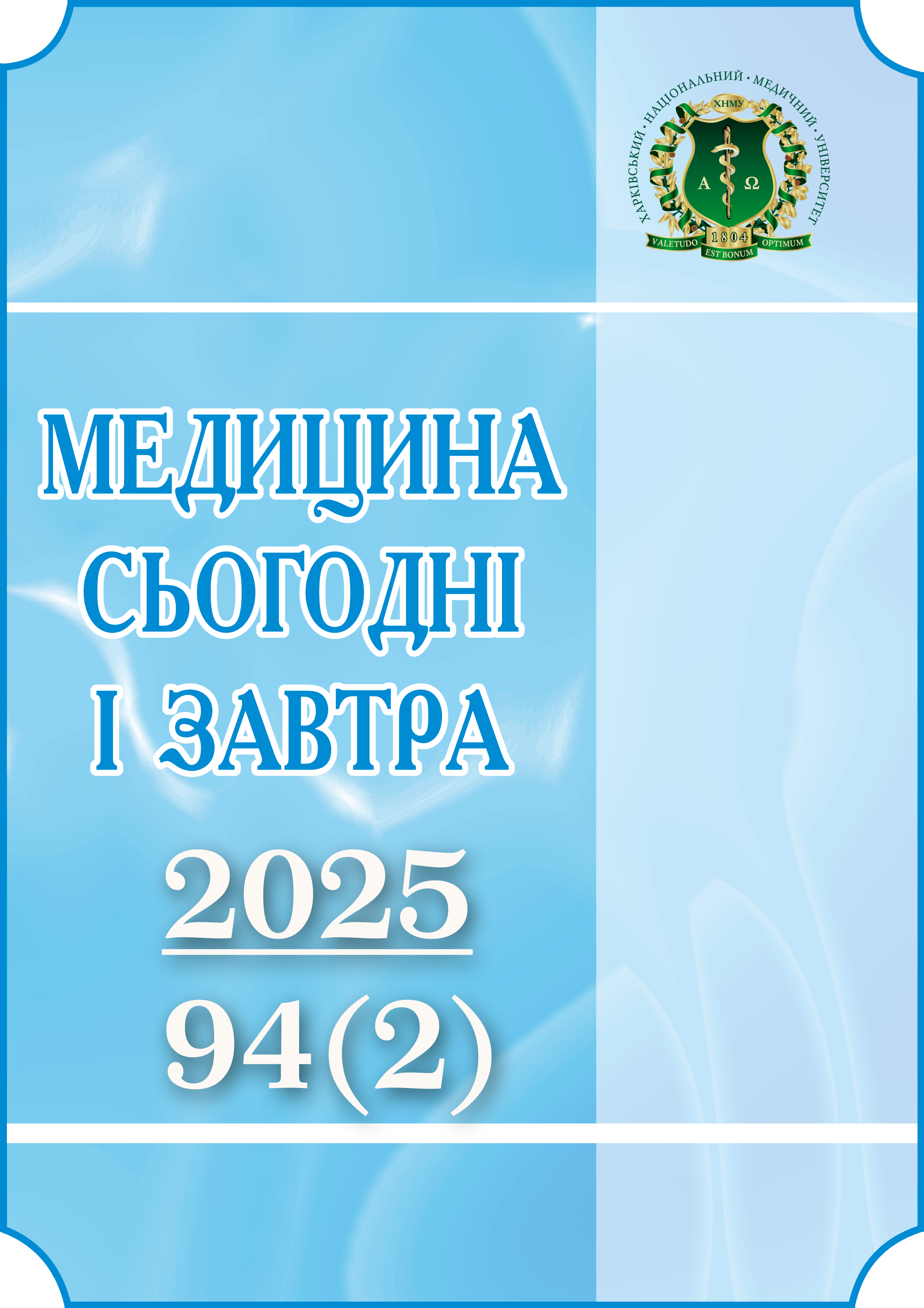Abstract
In press
Given the current realities in Ukraine (full-scale war, sharp deterioration of the socio-economic indicators of citizens' lives, and a demographic crisis), the issues of access to high-quality health-related information, pharmaceutical products, treatment and self-care options, and patient safety have become increasingly relevant. In this context, special attention was paid to women, particularly during the menopausal period. The study aimed to determine the prevalence of self-medication among women over the age of 48 for the prevention of osteoporosis, specifically the use of calcium supplements and their combinations. The study sample included 200 women, 174 of whom were in menopause. Specially designed questionnaires were used for data collection. The methodology was based on a social analysis including descriptive and analytical methods. According to the sociological survey, 84.0% of women demonstrated awareness of mineral deficiencies associated with menopause. Among respondents, 15.0% believed that mineral loss could be corrected through a balanced diet. Additionally, 51.5% reported relying on physicians' advice, obtained either during in-person consultations or from educational video content created by medical bloggers. It is important to note that women undergoing hormone replacement therapy tended to follow doctors’ recommendations regarding osteoporosis prevention. A negative finding of the survey is that only 15.0% of women were aware of blood tests to assess bone mineralization, and merely 2.0% had such tests performed and subsequently took medications according to physicians’ prescriptions and recommendations. The study revealed a significant prevalence of self-medication regarding osteoporosis prevention among women over 48 years of age during menopause, most notably the uncontrolled use of calcium supplements.
Keywords: hormonal changes, mineral deficiency, calcium supplements, vitamin D3, sociological research, women's health.
References
Tkachenko NO, Demchenko VO, Demchenko VO, Lytvynenko OV. Research on current issues of self-medication among young people. Current issues in pharmacy and medicine: science and practice. 2024;17(3):267-72. DOI: 10.14739/2409-2932.2024.3.307771. [In Ukrainian].
Guidelines for the regulatory assessment of medicinal products for use in self-medication. Geneva: World Health Organization; 2000. Available at: https://iris.who.int/handle/10665/661543
Zaremba NI, Zimenkovsky AB. [Attitude to the process of self-medication of applicants of higher medical education at pre- and postgraduate stage (according to results of the sociological survey)]. Pharmaceutical Review. 2018;(3):94-9. DOI: 10.11603/2312-0967.2018.3.9323. [In Ukrainian].
Pereira G, de Souza CM, Ferracini AC, Surita FG, Eltonsy Sh, Mazzola PG. Self-medication among pregnant women in comparison to the general population: a scoping review of the main characteristics. Rev Bras Ginecol Obstet. 2024;46:e-rbgo77. DOI: 10.61622/rbgo/2024rbgo77. PMID: 39669310.
Bouqoufi A, Laila L, Boujraf S, Hadj FAE, Razine R, Abouqal R, Khabbal Y. Prevalence and associated factors of self-medication in worldwide pregnant women: systematic review and meta-analysis. BMC Public Health. 2024;24(1):308. DOI: 10.1186/s12889-023-17195-1. PMID: 38279083.
Hala LO, Kosyachenko KL, Polova ZhM, Konoshevych LV. The growing role of pharmacists in society and prospects for their professional activities. News of Pharmacy. 2024;108(2):3-9. DOI: 10.24959/nphj.24.152.
Lizcano F, Guzman G. Estrogen Deficiency and the Origin of Obesity during Menopause Biomed Res Int. 2014;2014:757461. DOI: 10.1155/2014/757461. PMID: 24734243.
Dubossarska ZM. Knowledge that can improve the diagnosis and treatment of postmenopausal osteoporosis. Medical aspects of women's health. 2024;155(3):9-11. Available at: https://surl.li/xkmmya
Brown JP. Long-Term Treatment of Postmenopausal Osteoporosis. Endocrinol Metab (Seoul). 2021;36(3):544-52. DOI: 10.3803/EnM.2021.301. PMID: 34154042.
Capozzi A, Scambia G, Lello S. Calcium, vitamin D, vitamin K2, and magnesium supplementation and skeletal health. Maturitas. 2020;140:55-63. DOI: 10.1016/j.maturitas.2020.05.020
Afrin S, AlAshqar A, El Sabeh M, Miyashita-Ishiwata M, Reschke L, Brennan JT, et al. Diet and Nutrition in Gynecological Disorders: A Focus on Clinical Studies. Nutrients. 2021;13(6):1747. DOI: 10.3390/nu13061747. PMID: 34063835.
Baccaro LF, Conde DM, Costa-Paiva L, Pinto-Neto AM. The epidemiology and management of postmenopausal osteoporosis: a viewpoint from Brazil. Clin Interv Aging. 2015;10:583-91. DOI: 10.2147/CIA.S54614. PMID: 25848234.
Dimai HP, Muschitz C, Amrein K, Bauer R, Cejka D, Gasser RW, et al. Osteoporose – Definition, Risikoerfassung, Diagnose, Prävention und Therapie (Update 2024): Leitlinie der Österreichischen Gesellschaft für Knochen- und Mineralstoffwechsel [Osteoporosis-Definition, risk assessment, diagnosis, prevention and treatment (update 2024): Guidelines of the Austrian Society for Bone and Mineral Research]. Wien Klin Wochenschr. 2024;136(Suppl 16):599-668. DOI: 10.1007/s00508-024-02441-2. PMID: 39356323. [In German].

This work is licensed under a Creative Commons Attribution-NonCommercial-ShareAlike 4.0 International License.

